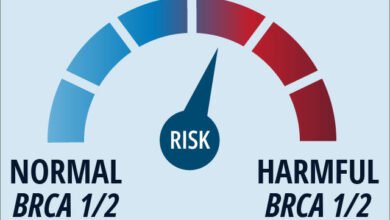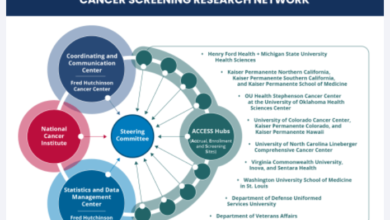Charities, Unveiling The Differences – Chris’s Cancer Community

Since I entered the cancer world back in 2007, it was hard to avoid all the charities connected with the subject. From big to small they were all making a noise. Initially, I volunteered at Macmillan Cancer Support for several years. But learned that my efforts, made very little difference in such a huge ‘machine.’ That is when I decided I needed to create my own organisation. So Chris’s Cancer Community was born. A few years later SimPal, our small registered UK charity was created.
I’m now in a unique position to comment on the UK charity world. As a person who runs one, and sees the inside workings of many others. Coming from a fast moving, and ruthless commercial business, to the world of charity, was a massive bump for me. The generally slow pace of work, and numbers of people involved, truly shocked me. Also how long it took to get a yes or no answer.
Then came covid! Many question whether these charity giants are now even relevant. Me included! I see so many ‘community charities’ including my own, doing the heavy lifting. The big boys looking lost, and seeking survival, in these challenging times. But I did some research to provide a more balanced view. Below is what it showed me.
Introduction:
Within the United Kingdom’s vibrant charity sector, both large and small organizations play crucial roles in addressing societal challenges. While large charities possess substantial resources and wide-ranging influence, smaller charities often excel in grassroots efforts and community engagement. In this blog, we will compare the impact of large and small UK charities, exploring their strengths and weaknesses to understand how they contribute to the betterment of society.
Scale and Scope:
One of the key differentiators between large and small charities, is the scale of their operations. Large charities have significant resources, enabling them to tackle complex social issues on a national, or even international level. Their extensive networks, established infrastructure, and substantial funding, allow them to address systemic problems, mobilize resources efficiently, and effect change across a broad scope. In contrast, small charities typically have localized focuses, working closely with specific communities, and addressing immediate needs at a grassroots level. Their smaller size allows for more personal connections, tailored approaches, and a deep understanding of the unique challenges faced by specific groups.
Accessibility and Community Engagement:
Small UK charities often excel in engaging with local communities, and fostering a sense of ownership and involvement. Their proximity to the people they serve allows for greater accessibility, direct interaction, and tailored support. This closeness enables them to build trust and establish long-term relationships, resulting in a more profound impact on individuals and communities. They are also adept at identifying niche issues, that may go unnoticed by larger organizations, addressing specific needs that are often overlooked.
On the other hand, large charities can struggle with community engagement due to their size and reach. While their resources enable them to provide extensive services, they may face challenges in developing close relationships with individuals on a personal level. However, they can often collaborate with smaller organizations to bridge this gap, combining their resources and expertise, to deliver more comprehensive support while maintaining community engagement.
Flexibility and Innovation:
Small charities have the advantage of being nimble and flexible, enabling them to respond quickly to emerging challenges and changing community needs. Their size allows for more streamlined decision-making processes, fostering innovation and adaptation in their approaches. They can experiment with new ideas, pilot programs, and iterate on their strategies, which can lead to effective solutions tailored to local contexts.
Large charities, while often perceived as slower to adapt, have the advantage of substantial resources and expertise. They can invest in technological advancements, data analytics, and research to drive innovation and improve efficiency. These organizations have the capacity to invest in large-scale projects, advocate for systemic change, and pioneer initiatives that may require significant resources and influence.
Financial Stability and Sustainability:
Large charities often benefit from long-standing partnerships with government entities, major corporations, and high-profile donors. This support provides them with a stable funding base, and the ability to plan long-term projects. Their robust financial position allows them to weather economic downturns, and sustain their operations, providing continuous support to those in need.




Small charities, while potentially more vulnerable to funding fluctuations, often have a dedicated donor base and rely on the support of local communities. They can tap into the power of individual giving, community fundraising events, and volunteer networks, to sustain their work. However, this reliance on individual contributions can introduce uncertainties and make their financial stability more susceptible to economic challenges.
Conclusion:
Both large and small UK charities contribute significantly to the betterment of society, albeit in different ways. Large charities wield resources, influence, and the capacity to address complex issues, on a national or international scale. Small charities excel in community engagement, grassroots efforts, and localized impact. By understanding and appreciating the strengths of each, we can foster collaboration and partnerships that leverage the unique attributes of both types of charities, ultimately maximizing their collective impact and advancing the common goal of creating a more equitable and compassionate society.
As you can see from my research, the perfect situation would be for these organisations to work hand in glove with each other, for the benefit of everyone. Sadly I don’t experience that at all. What I see now, is the big boys using their funds to appeal for more money. Blocking many small charities along the route. So little signposting to the public, it is sad. I only see the giants in all sectors, looking to protect their income and brand, at all costs. Even if that is to the detriment of those they are there to help. From some recent private conversations I have had, I only see this situation worsening. Ultimately, like everything in life, it comes down to a fight for cash.
These are my personal opinions based on my own experiences. Please feel free to share your own views below.
Related
Source link
#Charities #Unveiling #Differences #Chriss #Cancer #Community



